The MGA With An Attitude
BRAKE LIGHT SWITCHES Fail with Burned Contacts -- FT-071
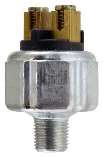 For more information on brake light switches, see:
For more information on brake light switches, see:
ET-119 - BRAKE LIGHT SWITCH
ET-119A - BRAKE LIGHT SWITCHS, Good Ones or Bad Ones
ET-119B - BRAKE LIGHT SWITCHS, Good Or Bad #2
ET-119X - BRAKE LIGHT SWITCH, Construction and Failure
ET-119X2 - BRAKE LIGHT SWITCH Failure, Borg Warner
ET-119X3 - BRAKE LIGHT SWITCH Failure, Intermotor
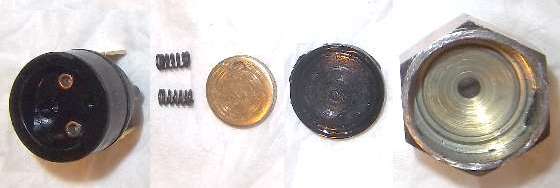
As this is not a snap action switch, the contact points close and open slowly. This allows a weak spark to jump the gap during actuation, which eventually has a burning effect on the contacts. As the contacts get dirty the contact resistance rises. The contacts then generate heat with the current. With time the resistance goes higher, and the heat will be greater. Eventually contact resistance becomes unacceptably high with unreliable contact. Then you have to stand hard on the brake pedal before the switch will make adequate electrical contact. When the pressure required is too high, there will be no contact, and the brake lights do not work. There is no wiping action on these contacts, so the contacts are not self cleaning. The most common problem with switches that fail is poor material for the contacts. Plating the contacts with gold, silver, or even nickle might stop the corrosion and burning. Bottom line is, many of these switch are unreliable due to cost cutting pennies on the quality of the internal electrical contacts.
This Borg Warner S550 brake light switch (from Advance Auto Parts) is dead, no brake lights with any amount of pedal pressure, slightly less than two months 5,000 miles.
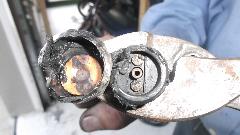
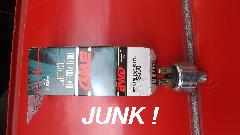
We opened the failed Borg Warner switch with a grinder to disclose the failure mode and the design-manufacturing deficiency. The contact plate is steel with a thin copper (or maybe cadmium) flash plating. It didn't take long to burn away the flash plating, after which the steel plate will corrode rapidly. Lots of driving in 60 days, 5000 miles, may have done 1000 to 3000 operation cycles on this switch. Since my trailer lights are LED's, total current for this switch is just 4-amps. A copper contact disc would be perhaps $0.02 worth of material. I can't imagine how much cost they thought they were saving by using the plated steel disc.
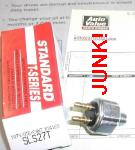
Addendum November 22, 2014:
Failed another switch today. This time Standard Motor Products SLS27T (peg post terminals) from Advanced Auto. Similar to the last one, eight weeks and about 5000 miles. This one had a copper contact disc, but burned off thin copper plating from contact points on the steel terminal posts.
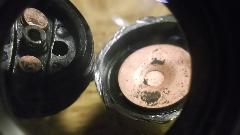 Addendum February 13, 2015:
Addendum February 13, 2015:
Another Borg Warner switch, BWD S194 (peg post terminals). This one made it a little longer, 11-weeks 8400-miles. Again burned off thin copper plating from contact points on the steel terminal posts. Photo after cleaning with vinegar and salt.
For a large cross reference list of interchangeable brake switches see:
ET-119A - BRAKE LIGHT SWITCHS, Good Ones or Bad Ones
Hydraulic switch failure has been epidemic in recent years. I will list any and all bad switches that are reported to me, in the hope that we might eventually find a source for a good switch.
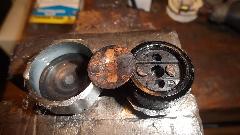 Addendum Apri 1, 2015:
Addendum Apri 1, 2015:
This time the NAPA Echlin SL134 (Mexico) failed in 7-weeks 6880-miles. The common link for all the failed switches (5 failed in 10 months, 5000 miles average) is "Made in Mexico" (and I would lay odds they all came from the same factory).
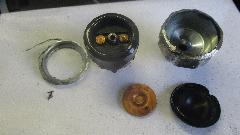
Addendum January 20, 2018:
Another NAPA Echlin switch, SL147 (made in Mexico as is quite common). Installed June 2, 2015, failed July 3, 2015, at 5272 miles. It was inevitable due to the same spring loaded disk and slow-make slow-break arcing contacts.
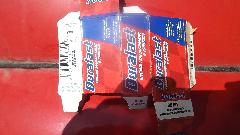 Addendum December 3, 2015:
Addendum December 3, 2015:
We may have a winner. Duralast RB401 (Made in Spain) purchased at Autozone. Five months and nearly 15,000 miles, and it is still working.
3 JUL 2015 - 303,538-miles - New switch Autozone/Duralast RB401 (Spain)
3 DEC 2015 - 318,362-miles - And it is still working.
8 NOV 2016 - 349,474-miles - And it is still working.
26 JAN 2018 - 397,680-miles - And it is still working.
15 MAR 2019 - 433,738-miles - Finally died after 3-yr 8-1/2 mo, 130,204 miles
Hovwever, ....
Auozone has since changed suppliers a couple of times, and indications are that the more recent parts will likely be bad. See electrical article ET-119G2.
Addendum August 30, 2020:
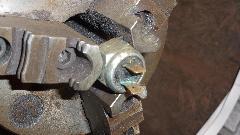 Sorry it took a year and a half to get around to this, but we finally cut the Duralast switch open, and I got a few surprises. First, the contact arrangement inside was pretty much like all other modern brake pressure switches with rubber diaphragm and a copper plate landing on fixed contacts (with a single spring this time). Second, the contacts were not notably burned, like maybe it should haave been working.
Sorry it took a year and a half to get around to this, but we finally cut the Duralast switch open, and I got a few surprises. First, the contact arrangement inside was pretty much like all other modern brake pressure switches with rubber diaphragm and a copper plate landing on fixed contacts (with a single spring this time). Second, the contacts were not notably burned, like maybe it should haave been working.
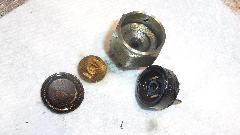
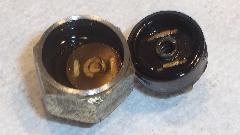
 And third, this is the first time I have ever found brake fluid in the contact chamber,
so it most likely died from hydraulic lock preventing motion to mechanically make the electrical contact. For now I will keep this one on the "good" list, because it was the longest lasting brake switch in the past six years. And third, this is the first time I have ever found brake fluid in the contact chamber,
so it most likely died from hydraulic lock preventing motion to mechanically make the electrical contact. For now I will keep this one on the "good" list, because it was the longest lasting brake switch in the past six years.
|
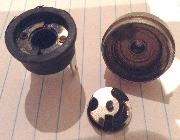
Addendum November 10, 2016:
On 11/10/2016, Darrell Martin wrote:
"The attached photo is of an ISSPRO R4006-4 switch I recently used on a power assisted system in our BGT. I did not pull it apart, rather it "blew its top" with the plastic/resin section totally detaching itself from the metal body. The engine bay then received a liberal coating of brake fluid. Despite my best efforts I cannot get the two sections back together (just to see how tightly it was manufactured)".
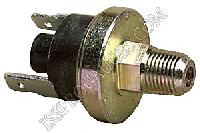 This was a mechanical failure, not electrical. Perhaps we should not blame the manufacturer for this one. It is designed for actuation at 4-psi. The brake hydraulics develope about 500-psi pressure, and the switch should actuate at about 50 psi (25-psi minimum switch point). Maybe this switch was not intended for use with 500 psi pressure.
This was a mechanical failure, not electrical. Perhaps we should not blame the manufacturer for this one. It is designed for actuation at 4-psi. The brake hydraulics develope about 500-psi pressure, and the switch should actuate at about 50 psi (25-psi minimum switch point). Maybe this switch was not intended for use with 500 psi pressure.
Addendum January 20, 2018:
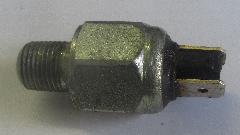 This one was the $23 Harley Davidson "Brake Light Switch Kit" 72023-51E, made in USA (for all that's worth) purchased November 2014, installed April 1, 2015, failed June 2, 2015 after 8074 miles. Aside from being small, it has the same general (bad) design as other quick failing pressure switches. A rubber diaphragm pushing a spring loaded washer, and slow-make slow-break contacts that will burn with electrical arcing.
This one was the $23 Harley Davidson "Brake Light Switch Kit" 72023-51E, made in USA (for all that's worth) purchased November 2014, installed April 1, 2015, failed June 2, 2015 after 8074 miles. Aside from being small, it has the same general (bad) design as other quick failing pressure switches. A rubber diaphragm pushing a spring loaded washer, and slow-make slow-break contacts that will burn with electrical arcing.
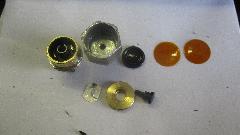 There was an additional thin metal contact plate with some kind of plating, but it didn't help. See the black burn mark on the silver colored contact plate, and the burned mating contact in the cap holding the spring. The two thin orange plastic discs were positioned between the rubber diaphragm and the brass washer. That may be a way to fine tune the pressure requirement for switch actuation.
There was an additional thin metal contact plate with some kind of plating, but it didn't help. See the black burn mark on the silver colored contact plate, and the burned mating contact in the cap holding the spring. The two thin orange plastic discs were positioned between the rubber diaphragm and the brass washer. That may be a way to fine tune the pressure requirement for switch actuation.
This one was removed from an MGA on 1/19/2018, failed after 250 miles. The manufacturer is FAE, their part number 20010 (stamped on the bottom of the part). Same story, slow-make slow-break and burned contacts.
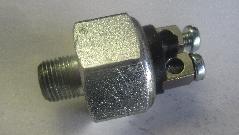
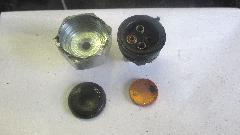
And this one August 24, 2022. Same manufacturer, FAE, part number 21020 with spade terminals, and same failure with burned contacts.
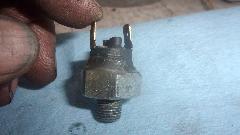
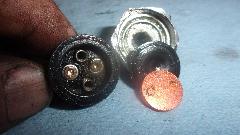
October 22, 2022:
Failed NAPA 16271, 2-months, 5613-mi.
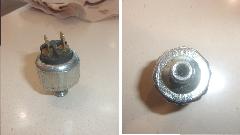

|
